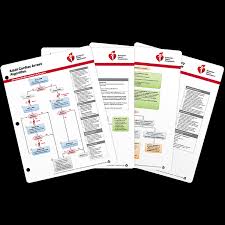When seconds count, the ACLS crash cart (also known as a code cart) can mean the difference between life and death. It holds the essential tools, medications, and equipment needed to resuscitate patients in cardiac or respiratory arrest.
Whether you’re a healthcare student, a new nurse, or brushing up for ACLS recertification, knowing what’s in the crash cart—and how it’s organized—can help you respond faster and more effectively during a code blue.
Why Is the Crash Cart So Important?
The crash cart is like a mobile emergency room, designed to bring critical interventions right to the patient’s bedside.
It helps teams:
- Save valuable time in life-threatening situations
- Standardize emergency response
- Access everything needed for ACLS protocols quickly
Crash Cart Organization: The Basics
Crash carts are strategically organized—most are color-coded or drawer-numbered for quick access. Here’s a breakdown of typical contents:
1. Airway Equipment (Drawer 1)
- Oral and nasal airways (OPAs, NPAs)
- Laryngoscope handles and blades (Mac & Miller)
- Endotracheal (ET) tubes, stylets
- Supraglottic airways (i-Gel, LMA)
- Bag-valve-mask (BVM)
- CO₂ detectors or capnography devices
- Lubricant, tape, ET tube holders
- Yankauer suction catheters
Why it matters: Secure and maintain an open airway—first priority in any arrest situation.
2. Emergency Medications (Drawer 2)
- Epinephrine 1:10,000
- Atropine
- Amiodarone or Lidocaine
- Magnesium sulfate
- Adenosine
- Dopamine, Norepinephrine
- Sodium bicarbonate
- Flushes, alcohol swabs, labels, needles, and syringes
Why it matters: These drugs follow ACLS algorithms and are often time-sensitive during resuscitation.
3. IV Access Supplies (Drawer 3)
- IV start kits
- Catheters of various sizes
- Tourniquets
- Saline flushes
- Pre-filled NS syringes
- Intraosseous (IO) kits
Why it matters: Rapid IV or IO access is essential for delivering life-saving medications and fluids.
4. Cardiac Supplies (Drawer 4)
- ECG electrodes
- Defibrillation pads
- Pacer pads
- Conductive gel
- Extra batteries for monitors
Why it matters: For rhythm monitoring, defibrillation, and synchronized cardioversion during ACLS.
5. Procedure & Miscellaneous (Drawer 5)
- Sterile gloves, masks, gowns
- Central line kits
- Chest tube kits
- Suture kits, scalpel blades
- Tape, scissors, alcohol preps
Why it matters: Supports advanced procedures like needle decompression or central venous access.
On Top of the Cart: Defibrillator & Monitor
Includes:
- Defibrillator/Monitor
- Pacing functions
- AED mode for rapid rhythm evaluation
Why it matters: You can’t do ACLS without it—delivering shocks ASAP saves lives.
Extras Often Included:
- Code documentation clipboard
- Clock or stopwatch
- CPR board
- Broselow tape (for pediatrics)
- Pediatric emergency medication chart
Key Takeaways
- The crash cart is your go-to emergency toolkit in a code.
- It’s stocked with supplies for airway management, IV access, defibrillation, and medication delivery.
- Knowing where things are and how to use them saves time—and lives.
- Regular mock codes and drills are essential for familiarity.
Final Tip
“Don’t just know ACLS—know your crash cart.”
Practice opening drawers, locating medications, and prepping airway tools. The more familiar you are, the faster you’ll act when it counts.


